Filter by
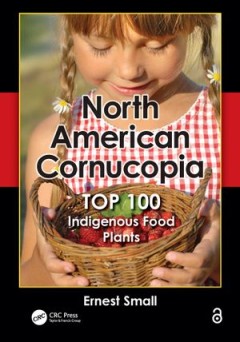
Transpositions: Aesthetico-Epistemic Operators in Artistic Research
Research leads to new insights rupturing the existent fabric of knowledge. Situated in the still evolving field of artistic research, this book investigates a fundamental quality of this process. Building on the lessons of deconstruction, artistic research invents new modes of epistemic relationships that include aesthetic dimensions. Under the heading transposition, seventeen artists, music…
- Edition
- -
- ISBN/ISSN
- 9789461662538
- Collation
- -
- Series Title
- -
- Call Number
- 780

Beyond Provenance
Human intentionality in chemical patterns in Bronze Age metals For the last 180 years, scientists have been attempting to determine the ‘provenance’ (geological source) of the copper used in Bronze Age artefacts. However, despite advances in analytical technologies, the theoretical approach has remained virtually unchanged over this period, with the interpretative methodology only changing …
- Edition
- Vol. 6.0
- ISBN/ISSN
- 9789461662668
- Collation
- -
- Series Title
- -
- Call Number
- -

Film Front Weimar
This first book-length study shows how Germany tried to reconcile the horrendous experiences of the FirstWorld War through the films made in 1919-1933. Drawing on the analysis of twenty-five such films, and covering a wide range of documentaries as well as feature films on the reasons for the outbreak of the war, life at the front,war at sea and the home front, the author sketches out the histo…
- Edition
- -
- ISBN/ISSN
- 9789053565988
- Collation
- -
- Series Title
- -
- Call Number
- 791 KES f
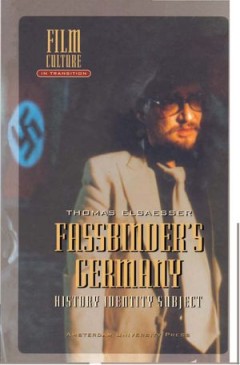
Fassbinder's Germany
Rainer Werner Fassbinder is one of the most prominent and important authors of post-war European cinema. Thomas Elsaesser is the first to write a thoroughly analytical study of his work. He stresses the importance of a closer understanding of Fassbinder's career through a re-reading of his films as textual entities. Approaching the work from different thematic and analytical perspectives, Elsae…
- Edition
- -
- ISBN/ISSN
- 9789053560594
- Collation
- -
- Series Title
- -
- Call Number
- 791 ELS f

Thumbnail for Artificial Intelligence and the Internet of Things BOOK 2018 …
"Through algorithms and artificial intelligence (AI), objects and digital services now demonstrate new skills they did not have before, right up to replacing human activity through pre-programming or by making their own decisions. As part of the internet of things, AI applications are already widely used today, for example in language processing, image recognition and the tracking and processin…
- Edition
- -
- ISBN/ISSN
- 9781911534839
- Collation
- -
- Series Title
- -
- Call Number
- -
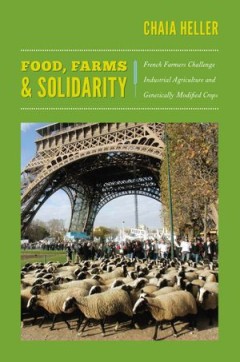
Food, Farms & Solidarity
The Confédération Paysanne, one of France's largest farmers' unions, has successfully fought against genetically modified organisms (GMOs), but unlike other allied movements, theirs has been led by producers rather than consumers. In Food, Farms, and Solidarity, Chaia Heller analyzes the group's complex strategies and campaigns, including a call for a Europe-wide ban on GM crops and hormone-t…
- Edition
- -
- ISBN/ISSN
- 9780822351184
- Collation
- -
- Series Title
- -
- Call Number
- -
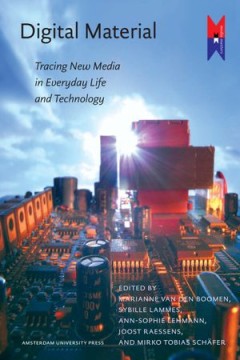
Digital Material
Three decades of societal and cultural alignment of new media have yielded a host of innovations, trials, and problems, accompanied by versatile popular and academic discourse. New Media Studies crystallized internationally into an established academic discipline, and this begs the question: where do we stand now? Which new questions are emerging now that new media are being taken for granted, …
- Edition
- -
- ISBN/ISSN
- 9789089640680
- Collation
- -
- Series Title
- -
- Call Number
- 791 RAE d

Contextualizing Disaster
Contextualizing Disaster" offers a comparative analysis of six recent highly visible disasters and several slow-burning, hidden, crises that include typhoons, tsunamis, earthquakes, chemical spills, and the unfolding consequences of rising seas and climate change. The book argues that, while disasters are increasingly represented by the media as unique, exceptional, newsworthy events, it is a m…
- Edition
- -
- ISBN/ISSN
- 9781785332807
- Collation
- -
- Series Title
- -
- Call Number
- -
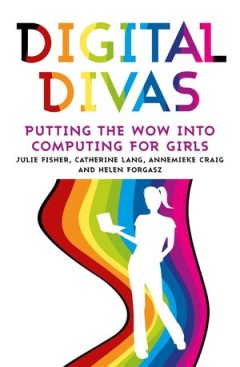
Digital Divas
The geek is male. Or so it seems. As is well documented, there is a distinct under-representation of girls studying computing at high school level and, correspondingly, going on to have careers in IT. To address this problem, in 2007 the authors of this book, with backgrounds in secondary teaching or IT, trialled a new and revolutionary program in schools: "Digital Divas." The Digital Divas pro…
- Edition
- -
- ISBN/ISSN
- 9781922235862
- Collation
- -
- Series Title
- -
- Call Number
- -

Yosano Akiko and The Tale of Genji
Yosano Akiko (1878–1942) has long been recognized as one of the most important literary figures of prewar Japan. Her renown derives principally from the passion of her early poetry and from her contributions to 20th-century debates about women. This emphasis obscures a major part of her career, which was devoted to work on the Japanese classics and, in particular, the great Heian period text …
- Edition
- -
- ISBN/ISSN
- 9780472902002
- Collation
- -
- Series Title
- -
- Call Number
- -
 Computer Science, Information & General Works
Computer Science, Information & General Works  Philosophy & Psychology
Philosophy & Psychology  Religion
Religion  Social Sciences
Social Sciences  Language
Language  Pure Science
Pure Science  Applied Sciences
Applied Sciences  Art & Recreation
Art & Recreation  Literature
Literature  History & Geography
History & Geography